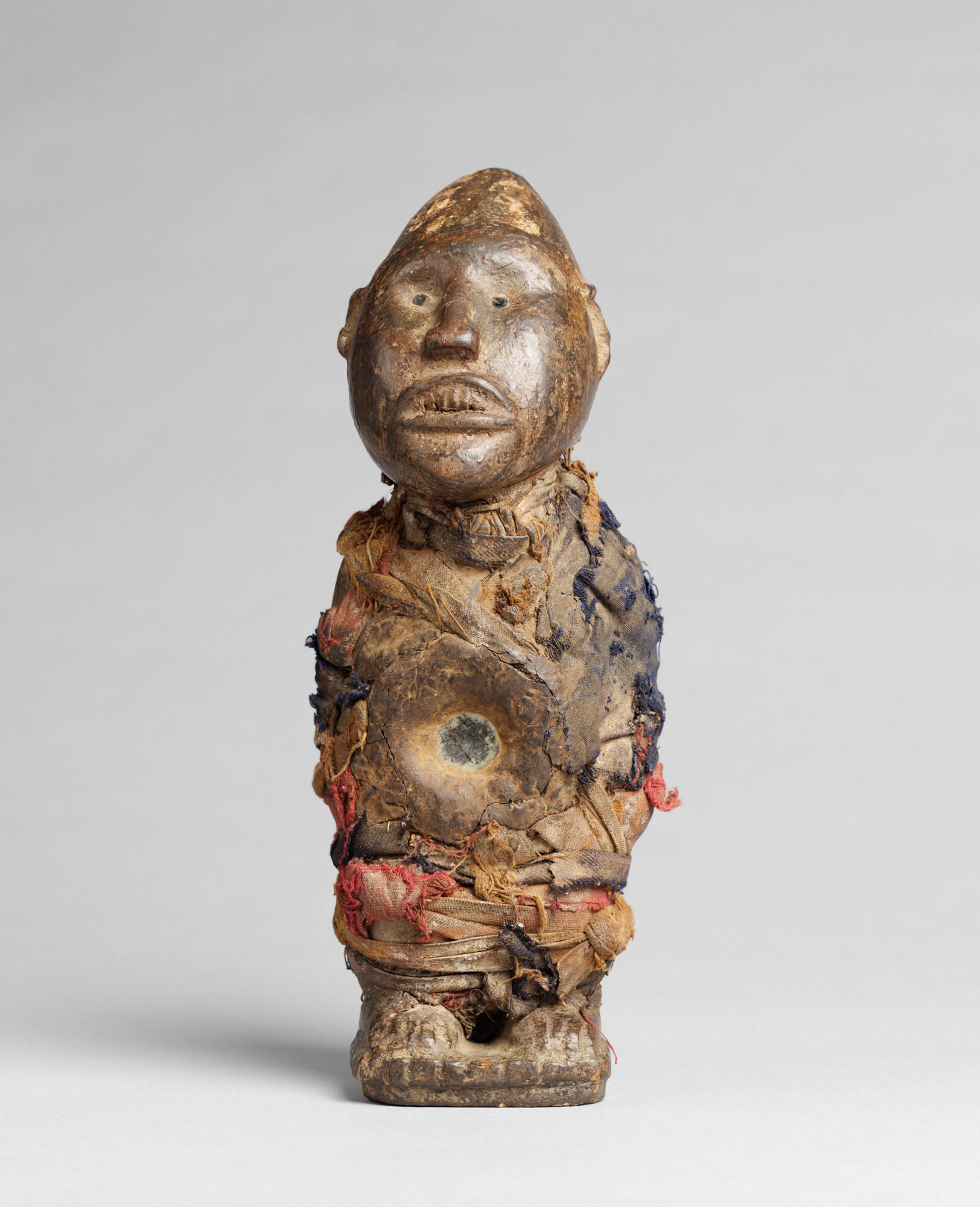
Object Details
Culture
Yombe (Democratic Republic of Congo)
Medium
Wood, cloth, and mirror
Dimensions
Height: 10 1/4 inches (26 cm)
Credit Line
Gift of William W. Brill
Object
Number
82.074.003
BRIEF DESCRIPTIONIn its original context this object was believed to have special powers. Called min(…)
BRIEF DESCRIPTIONIn its original context this object was believed to have special powers. Called minkisi (singular nkisi) or “medicine of God,” these figures have been reported to function in over one hundred ways.WHERE WAS IT MADE?This was made in the Democratic Republic of Congo by the Yombe people, who live in the far western tip of the country.HOW WAS IT MADE?Minkisi are made of wood, mirrors and resin and are covered with medicines and other ornaments. As storage vessels, their bellies contain additional herbs and powerful organic matter. These materials give the figures their spiritual power. Once the abdomen is filled, it is sealed and cannot be opened. Because the seal cannot be broken without seriously damaging the figure, the intended meaning of most minkisi is allusive. Trained sculptors carve minkisi figures, but an nganga, a spiritual or medical advisor, activates the power of the nkisi by adding fabric, iron nails, leather, shells, and organic materials to the sculpture. This nkisi was carved from wood and has only cloth to activate its powers. The addition of cloth, a commodity, shows that some financial offering was made to the figure. The knots, as well as the act of tying, signify the capturing and binding of a spirit. Finally, this cloth may have come from an intimate garment of the owner, thus sealing the connection between the user and the nkisi.HOW WAS IT USED?Minkisi are believed to have special powers, and have been classified into four major groups. The first functions to heal, the second causes illness, the third protects, and the fourth, and best known, is believed to inflict harm on troublemakers. Within these four groups, more specific functions are given to particular figures.Shrines, altars, or special rooms usually hold minkisi figures. If a figure is judged as ineffective or powerless, it may be sold or returned to the nganga for strengthening.WHY DOES IT LOOK LIKE THIS?Notice the mirror on the abdomen of this nkisi. Minkisi often contain mirrors. In this case, the mirror on the abdomen is meant to turn away evil and throw it upon those who profit at others’ expense. Mirrored eyes on minkisi serve to reflect the faces of people standing before the figure, reminding them that the spirit may be watching.Nick Leonard ’07 conducted research for this description.












